
At House of Baukjen we’re passionate about creating clothes that are designed for good. Good not just in their fit and quality, but also in terms of their impact on the planet and its people.
In the last two years, we’ve taken a number of steps to create better clothes, from reducing the number of miles our clothes travel to get to us, to choosing more sustainable fibres and working with ethical suppliers.
As a company, we wanted to better understand how our choices of materials and manufacturers contributed to the overall impact of our garments, which has led to the creation of our Baukjen Sustainability Index Metric.
The Baukjen Sustainability Index metric is calculated based on the Environmental and Social performance of each of our garments. It is designed to help us make better choices as a company and to help our customers understand the impact of our clothes.
We are currently introducing the Baukjen Sustainability Index to our product pages, where the overall score is shared with you. Towards the bottom of the page, you’ll find more detailed information. This will allow you to compare different products based on their impact and help you make choices better aligned with your values.
Please continue reading for detailed descriptions of how our impact is calculated.

We are strong believers that both the environmental footprint and social impact of each thing we do are important. As the fashion industry is starting to take responsibility for its effects on the planet, we believe it is important to be as comprehensive and transparent as possible. For this reason, we are using 7 different measurements in the Baukjen Sustainability Index, the initial 5 are environmental and count as 70% of our overall score, the final 2 are social and count as 30% of the overall score.


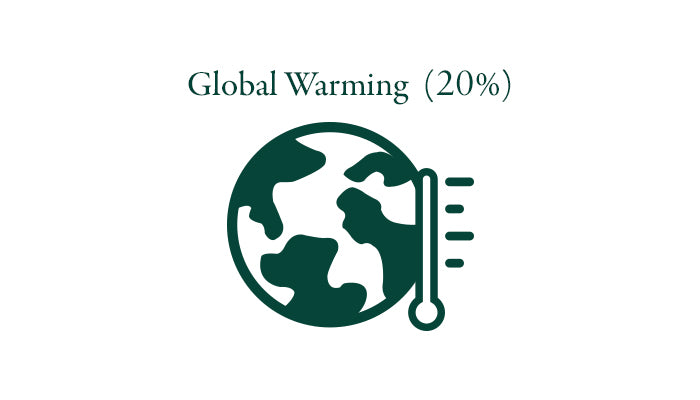
We measure our positive impact as accurately as possible by using secondary Lifecycle Analysis data combined with reports from our suppliers. This data is science-based and relies on independent databases, to ensure its reliability.
Minimising carbon emissions and contributions to Global Warming
Our changing climate poses a number of threats to life on Earth as we know it, with many effects being felt already. Global Warming impacts different areas and ecosystems differently and unfairly. It is imperative that we collectively tackle Carbon and other Green House Gas emissions, which is why we are committed to Low Carbon materials and manufacture in Europe.
Low Carbon materials are those that from fibre to final garment contribute less to Global Warming.
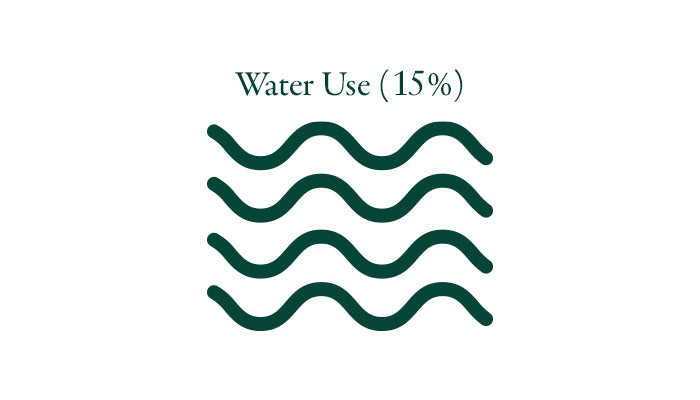
Minimising the water needed for growing the fibres and producing this item
This metric looks into the amount of water needed to grow or produce a fibre, then turn into a material and dye it. Water is one of our most precious resources, and an increasingly smaller amount of fresh water that is safe for human consumption is available. Therefore preserving it by using fibres that don’t require a lot of water is a priority, as is working with dyeing and washing facilities that go beyond regulations to ensure their effluents are clean and safe.
Video
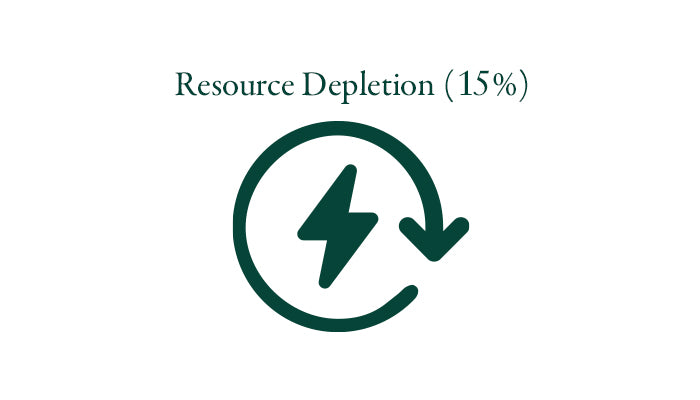
Minimising the use of non-renewable resources, like petrol and inorganic elements
Unlike renewable resources, some resources are not available in plentiful quantity for the pace at which we consume them. This includes fossil fuels (which also contribute to Global Warming) and inorganic elements (such as metals and some types of salts). Their use in logistics, production and as part of the final garments leads to the depletion of these resources in the natural world. Not only can this negatively affect the ecosystems that these resources are being taken from (for example, in the case of mining) but also by then depositing them in ecosystems where they don’t belong, causing pollution.
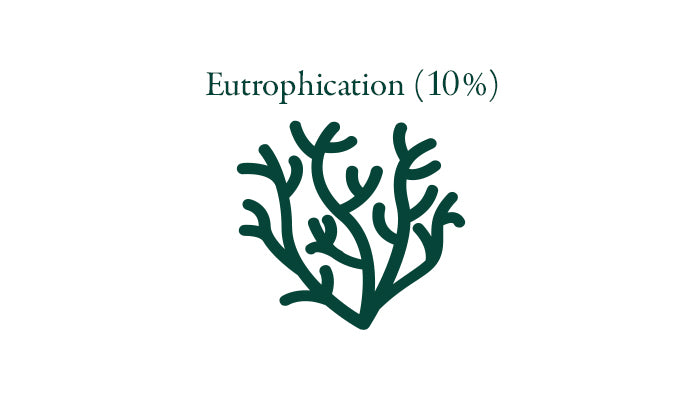
Minimising the unnatural accumulation of nutrients to bodies of water, preserving balanced eco-systems
Eutrophication is the process through which nutrients accumulate in bodies of water (such as lakes), changing the composition of the water and negatively affecting those ecosystems. Substances such as phosphorus, nitrogen and other plant nutrients are added to the soil as fertilizers to aid the growth of crops. They then travel on water primarily by runoff from land and contaminate bodies of water. In there they feed algae and bacteria to unhealthy levels, leading to the lower levels of oxygen in the water and the death of other species. Entire lakes, even slow rivers and calm seas have so far been decimated by eutrophication.
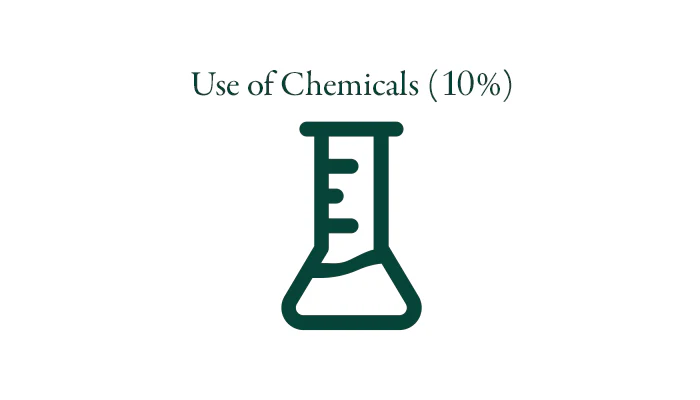
Minimising the chemicals used for growing and processing the material, and dyeing this item
The excessive use of chemicals in the making, processing and dyeing of materials is a leading cause of pollution in our planet. It negatively affects the people having to deal with elevated concentrations of harmful chemicals (especially if they don’t have appropriate protective equipment), pollutes soil and waterways, and can continue affecting our own health as users of the resulting clothes. We follow REACH UK regulation which identifies a list of substances to avoid, details of this can be found here. We are increasingly paying attention to the chemical footprint of our products and how they are handled during production, which this metric quantifies.

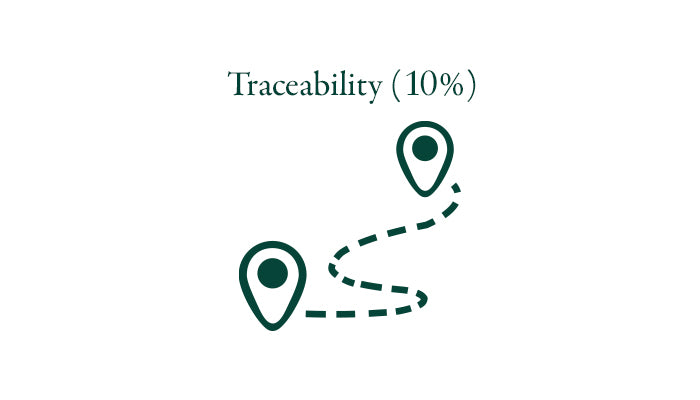
We consider both traceability and people’s livelihoods and wellbeing to be part of our Social Responsibility.
The transparency of the supply chain for this item, from raw material to finished product.
Traceability is important to calculate the environmental impact of our fibres, but this can arguably be done using a number of assumptions that are commonplace in our industry – an industry known for its obscure supply chains.
A more important aspect of knowing where our fabrics have been before reaching us is ensuring that the people responsible for growing and harvesting our raw materials have good working conditions, are paid a fair wage and able to live with dignity. In a way, transparency of our supply chain is a key part of ensuring the ethics of our materials.
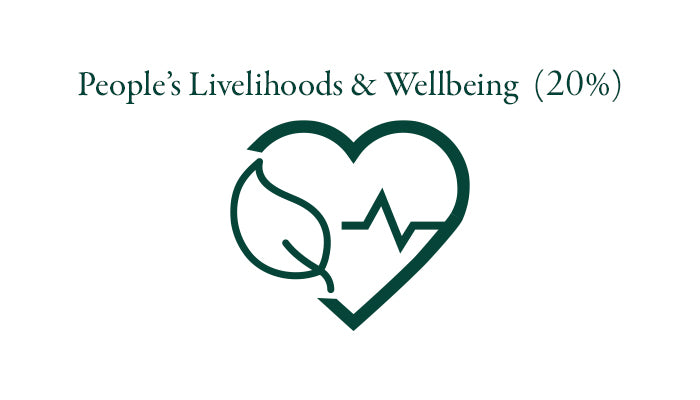
The impact of this item on the people needed to create it, from raw material to finished product.
We are a family-run business who extend the feeling and care of ‘family’ to our entire team. We want to extend the same care and conditions to all people who are involved in bringing our garments to life. This is part of the reason why it is important for us to map our supply chain and ensure the good treatment of everyone we directly and indirectly employ. As we grow, we want them to grow and rise with us.
People’s Livelihoods and Wellbeing is the hardest of all our metrics to quantify, as this is an intrinsically qualitative subject. We have settled on using a system that adds points for each metric in which, to the best of our knowledge, people are being treated fairly and ethically, for each step in the supply chain. In the absence of information for a tier of the supply chain, that area scores nil.
The areas we currently score each tier for are:
- Fair labour: people are employed to do decent work.
- Fair pay: workers are fairly paid for their labour and hours.
- Working conditions: work is done from a safe and sanitary place.
- Training: workers receive fair training, reducing risk of injury and long term health problems.
- Community impact: this work has positive repercussions in the community at large.
